Garden path ideas – 15 ways to create a beautiful walkway
With these garden path ideas a walkway will become a feature in its own right using the best materials, edging and surrounding planting

Leigh Clapp
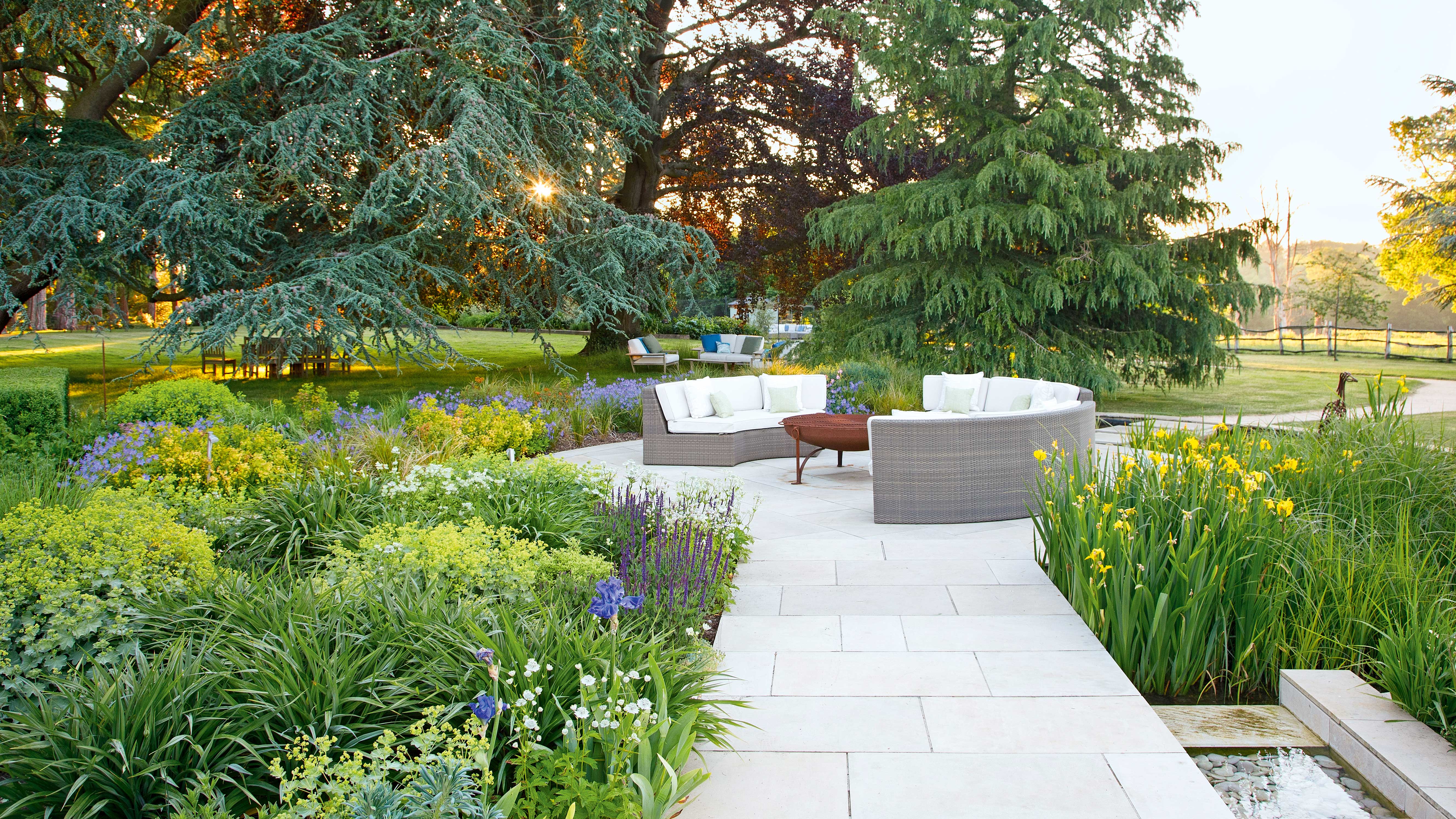
Garden path ideas provide practical access to areas of your backyard, while also offering design aesthetics to complement your home and style.
There are many ways to create these defined ribbons and links around your garden as part of your garden ideas, whether they are to offer scenic rambles through plantings or essential access ways to productive or functional areas.
Consider the purpose of the path, the surfaces you prefer and which are good for the environment, the shapes that would suit your garden design – whether curved or straight – and that will work in harmony with the landscape.
The right garden path idea can make all the difference to how to eye perceives a narrow garden, and there are many different layouts and styles to choose, whether it is a path to your front door as a front garden idea, or a more subtle walkway meandering through a profusion of blooms in a wildlife garden.
Look to the colors already in your garden and the architecture of your house to guide your tones of hard landscaping materials and plant palette choices – whether complementing or contrasting.
Garden path ideas for wonderful walkways

'Garden paths are intrinsic to the navigation through a space, essentially falling into one of two camps: the pragmatic and the whimsical,' explains garden designer Nic Howard of We Love Plants
'From a functional artery that takes you straight to the front door, to a fanciful meander along a mown path through a meadow, we all have them. Paths are tangible routes that navigate our outdoor space, offering a durable surface in wet weather or perhaps a soft grassy route that you venture barefoot on warm summer afternoons,' Nic adds.
Design expertise in your inbox – from inspiring decorating ideas and beautiful celebrity homes to practical gardening advice and shopping round-ups.
Decide where you want your path to go – directly to the shed, compost heap or bench, or a scenic stroll through the garden? Or will it be a focal point itself? Adding yard art ideas at the end of a walkway can help to elevate it to a more than a path.
'Whether for purpose or pleasure, paths are a crucial part in the effective design of any garden,' says Nic.
One of the key rules for garden path design is to plan well, as the placement of the path will determine how everything is seen and enjoyed. Consider changing the surface to signal you’re entering a new area, or that you should stop and enjoy a view, or follow a new direction.
Test your garden layout by marking out a temporary path. When you’ve got a route mapped out, pick your materials.
1. Adorn a garden path with a shading pergola
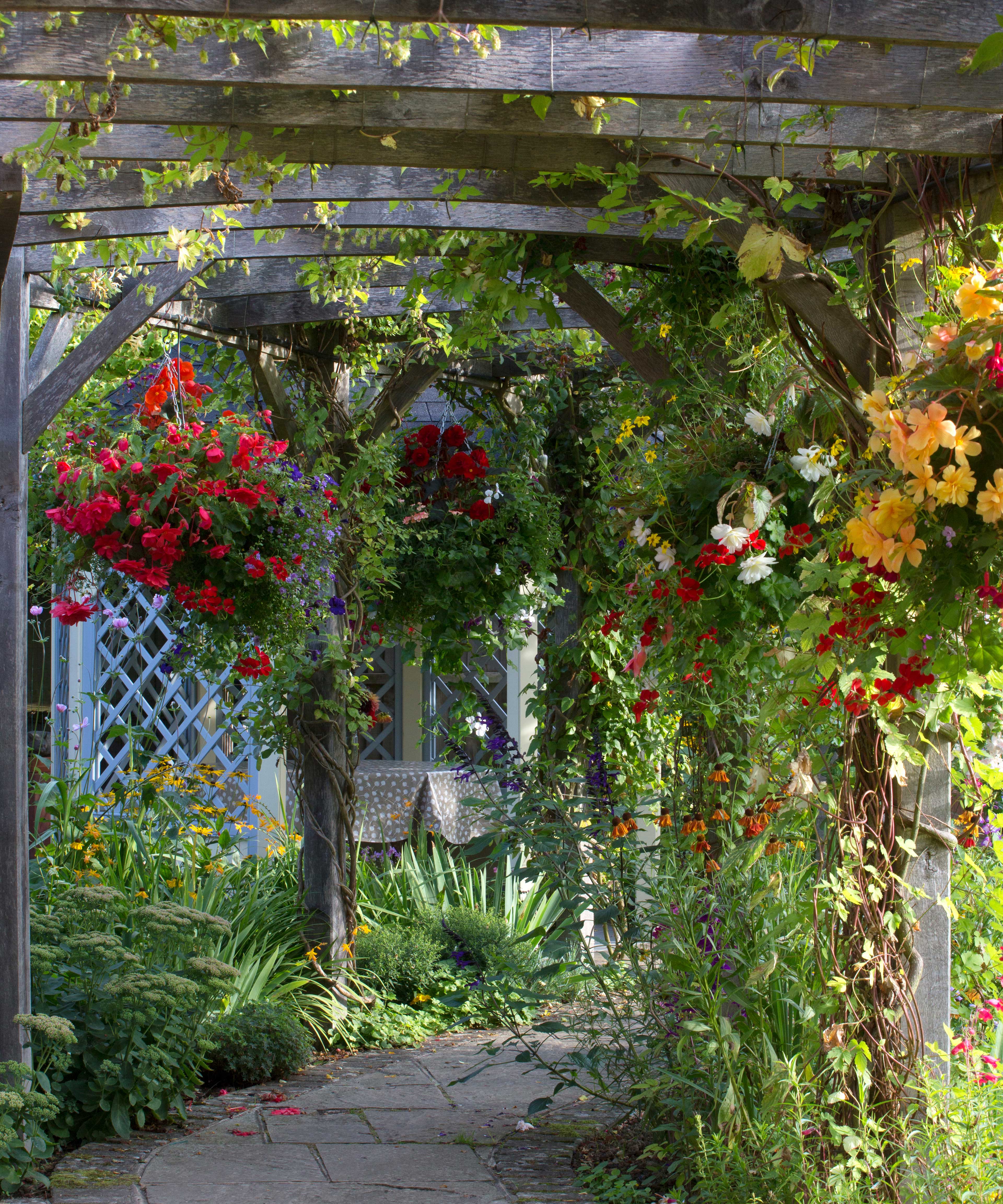
Adorn your garden path ideas with pergola ideas clothed in scented climbing plants, fragrant roses or trailing plants in hanging baskets to add an extra sensory experience as you stroll its length, making journeying to another part of the garden a magical experience.
You can buy timber tunnel pergolas, use a series of ready-made arches in classic round, ogee or gothic shapes, showcase your DIY skills, or have your tunnel path bespoke built to suit your vision.
The structure will also add interest to the vertical plain as a vertical garden idea, framing a perspective, and could be punctuated with large planters or have destinations along its length, such as charming seating areas. You could also add outdoor lighting for an illuminated route.
2. Draw the eye down a path with a focal point
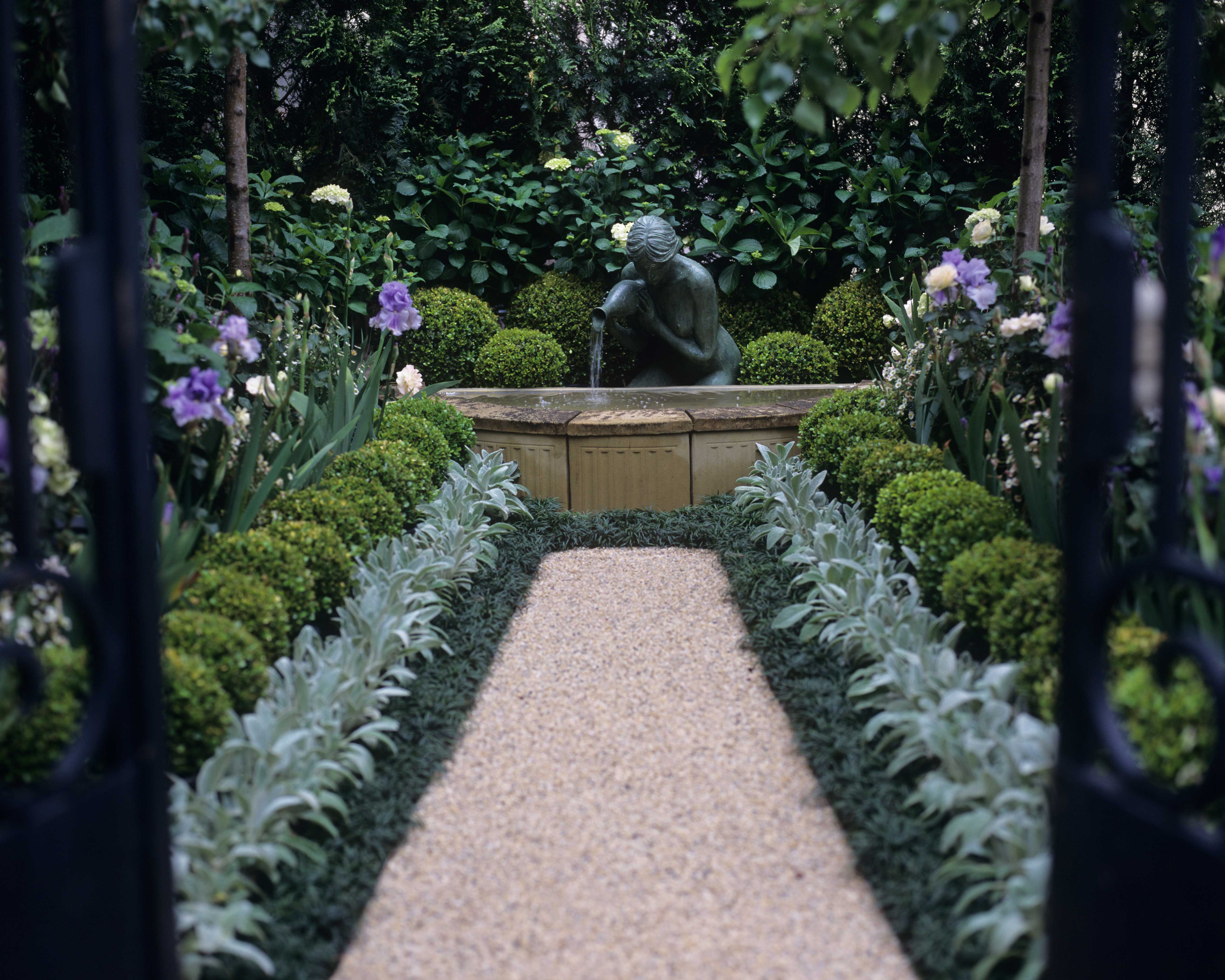
Drawing the eye along garden path ideas or allées is a key principle in garden design. Do you want your path to lead to a destination point, such as an arbour to sit under, or just be a visual trick leading to a striking piece of sculpture? The design of garden paths offers an opportunity to get creative.
Repeating plants along the path, whether a row pollarded trees for a grand statement, or the charm and scent of growing lavender mounds, is a proven technique that works well in all sized gardens.
This design above features layers to form a living picture, with a neat row of lilyturf, Ophiopogon, a silver band of irresistibly soft lamb’s ear, stachys, clipped evergreen shrubs, buxus mounds, a seasonal surprise of pretty irises and framed by a hedge of hydrangeas.
3. Create a woodland walkway
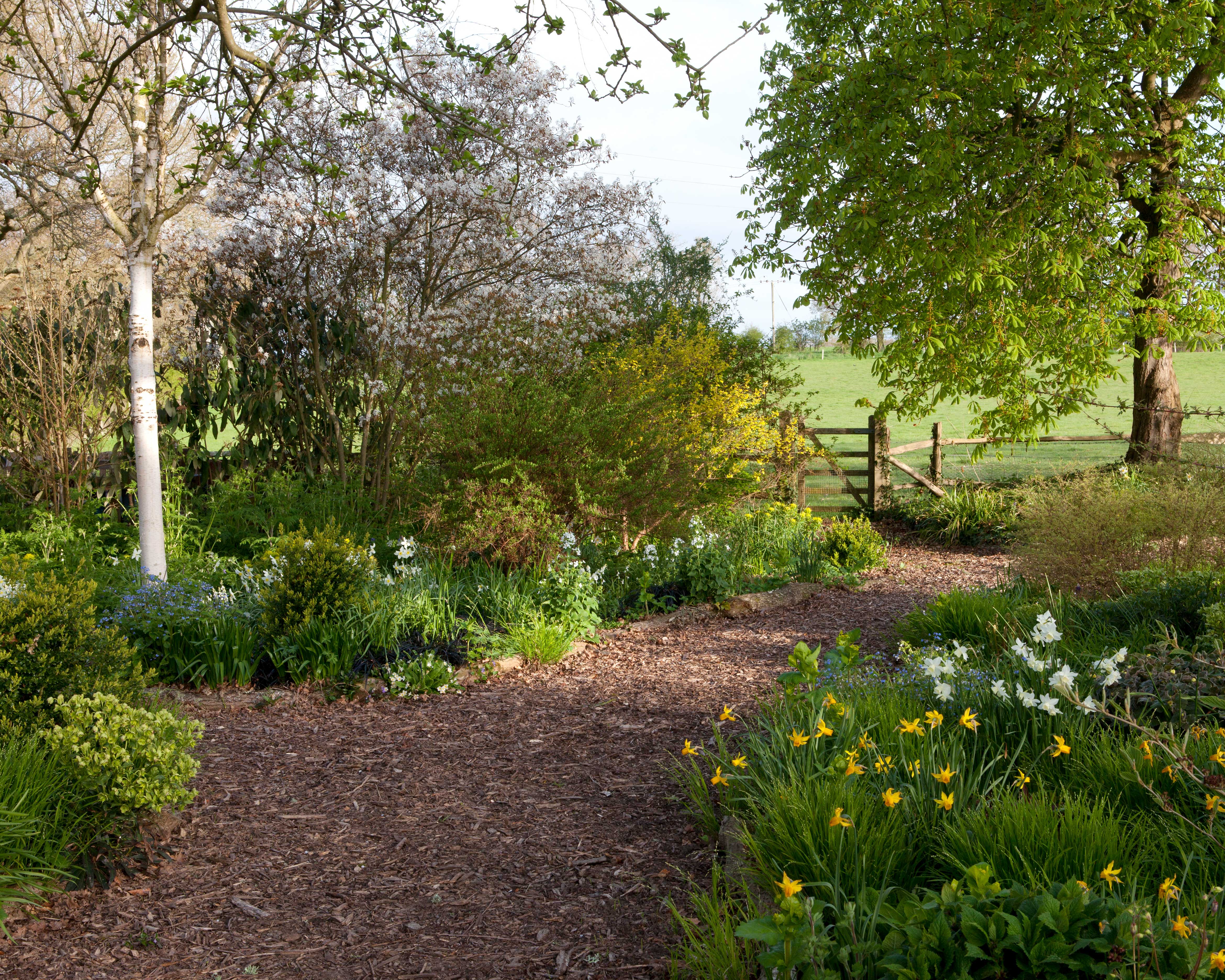
Bark and wood chippings are a natural fit with the dappled shade of woodland garden areas, while also protecting from erosion, mulching and suppressing weeds.
Look for sources that haven’t used pesticides, as these can affect surrounding woodland plant growth and animal health. It’s advisable to top up the bark or wood chippings as needed, as it will naturally break down over time. As well as buying the products, you can use chippings or shredding from your own garden pruning, and felling of large branches and trunks.
The RHS recommends chippings from broadleaf and conifers, as they offer an excellent protective layer, decomposing slowly, making them longer-lived, which will reduce the need to re-apply, while absorbing moisture and releasing it back slowly for a sustainable garden idea.
Ideally, the width of the path should fit two people side by side. For a ‘hide and reveal’ route through the garden, design a meandering S-curve. Restrain edges to keep the chippings in place and present the sides from crumbling.
4. Embrace the beauty of natural stone
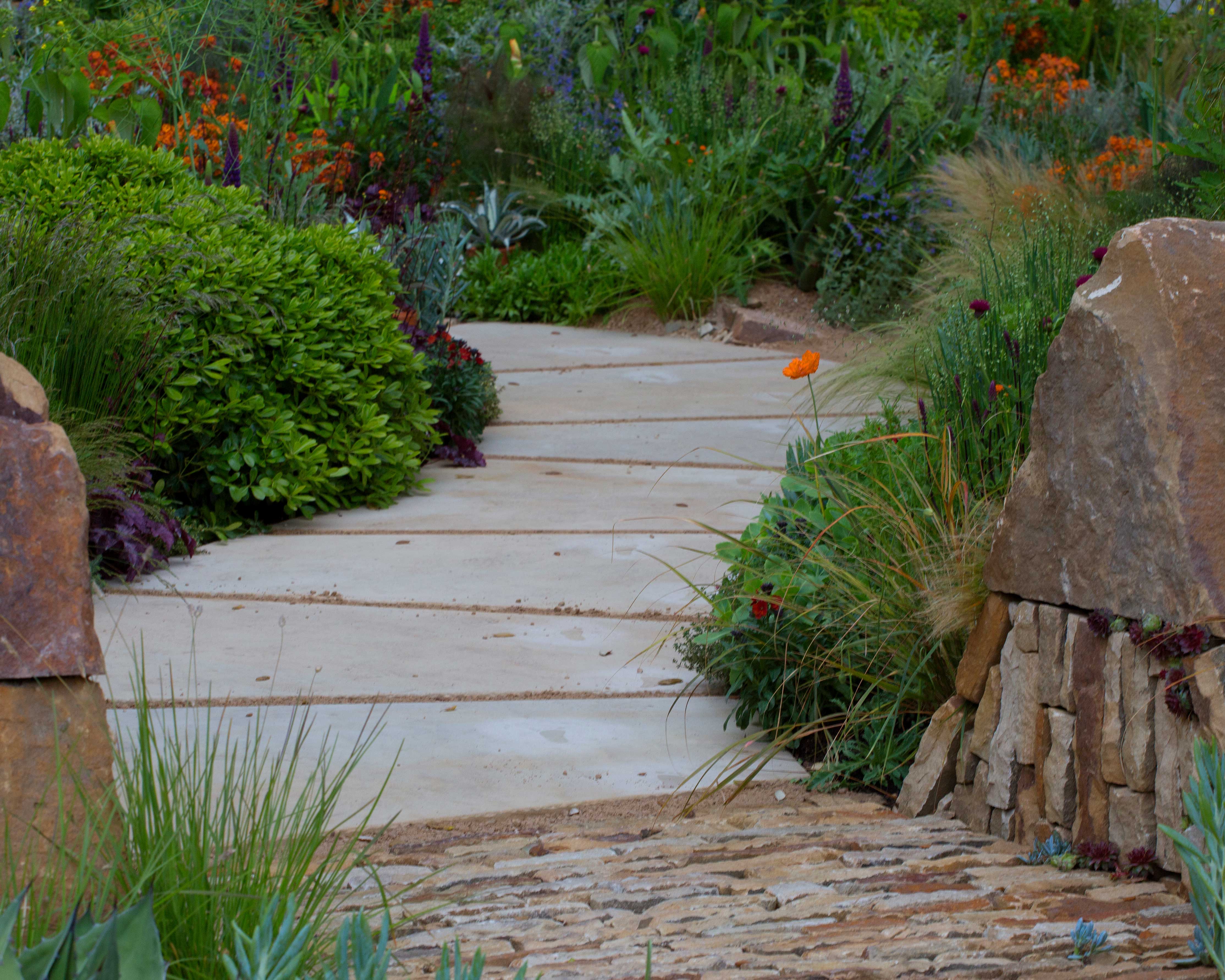
Get creative with the design of your garden path ideas. In the image above, angled stone slabs are placed to curve sinuously, setting off the planting, which includes loose mounds of pittosporum, burgundy foliage of heucheras and splashes of bright orange erysimum. As landscaping ideas with rocks, interest is also created by large rock sculptural sentinels and stacked smaller pieces at the entrance to the path.
Stone has a lovely weathered character for garden landscaping ideas, and a great source is a reclamation yard, where you can choose your pieces that have character and color to suit your scheme. Natural stone is durable, and can be re-used and recycled. Always aim for local or sustainable choices from reputable suppliers.
'For a traditional property, natural stone materials are a great choice; you can opt for a stone that has been quarried within the country for a more sustainable garden. Natural stone is timeless and classically beautiful, with each surface unique,' says Johanna Elvidge, head of domestic design at Marshalls.
5. Include permeable surfaces
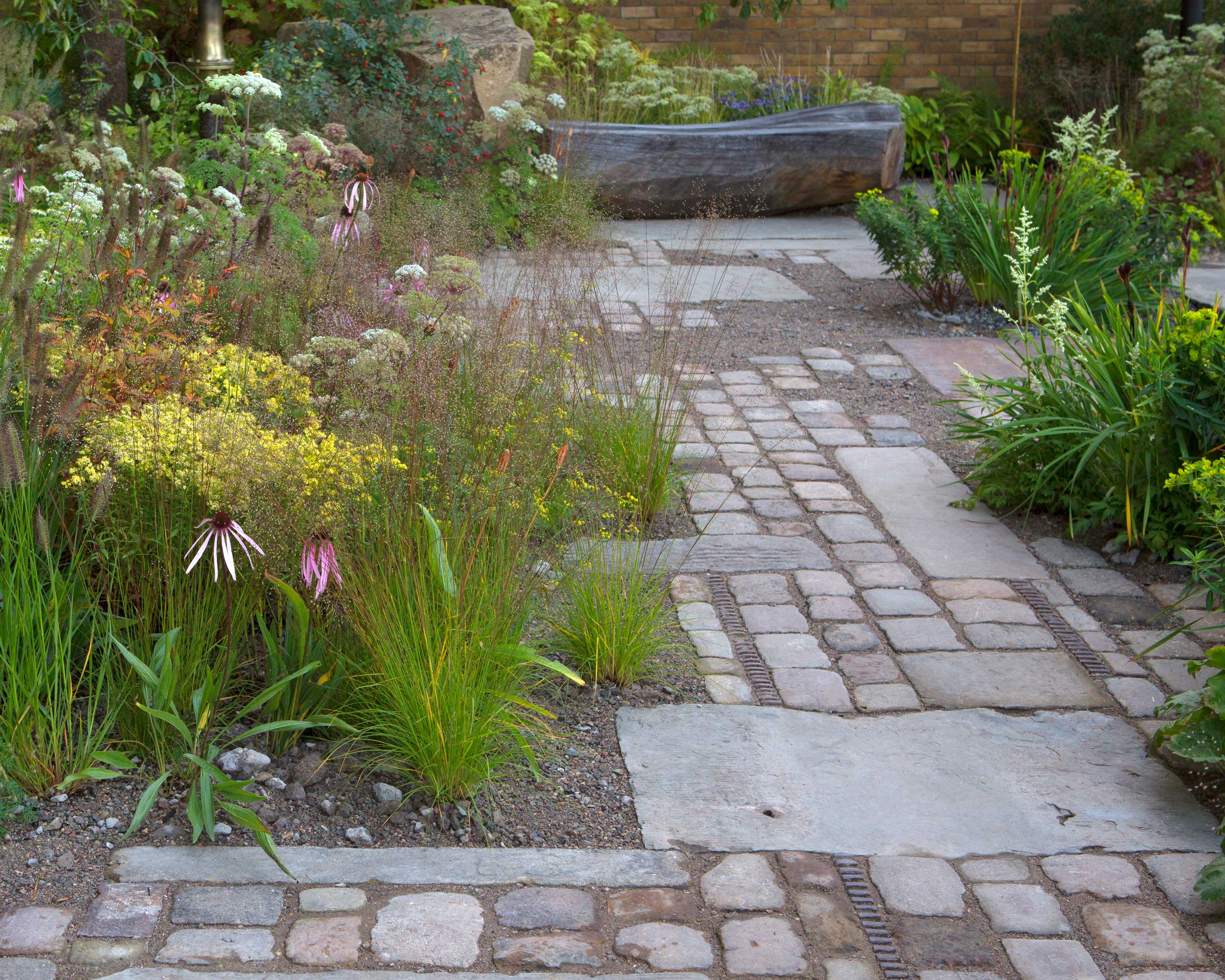
Permeable surfaces in garden path ideas are important to help manage water and reduce flooding as they allow water to pass through. This idea above combines gravel between stone pieces to improve drainage, along with the addition of channel drains, in an appealing durable mix that also gives character to the path. Using offcuts and pieces that may otherwise be disposed of is economical and environmentally positive. The materials are spread through the landscaping giving a more varied undefined shape to the design, offsetting the planting of resilient and drought tolerant planting choices, such as ornamental grasses, echinacea and achillea.
'When choosing natural materials, I opt for recycled if possible, and as well as beauty and utility, I always factor in provenance, because this has the greatest impact on the planet. By buying local we reduce fuel usage and carbon footprint, especially for heavier materials. By using ethically certified materials we help keep the supply chain safe, especially in the quarries, so that the beauty is more than surface deep,' explains landscape architect Marian Boswall.
6. Soften the edges of paths with planting
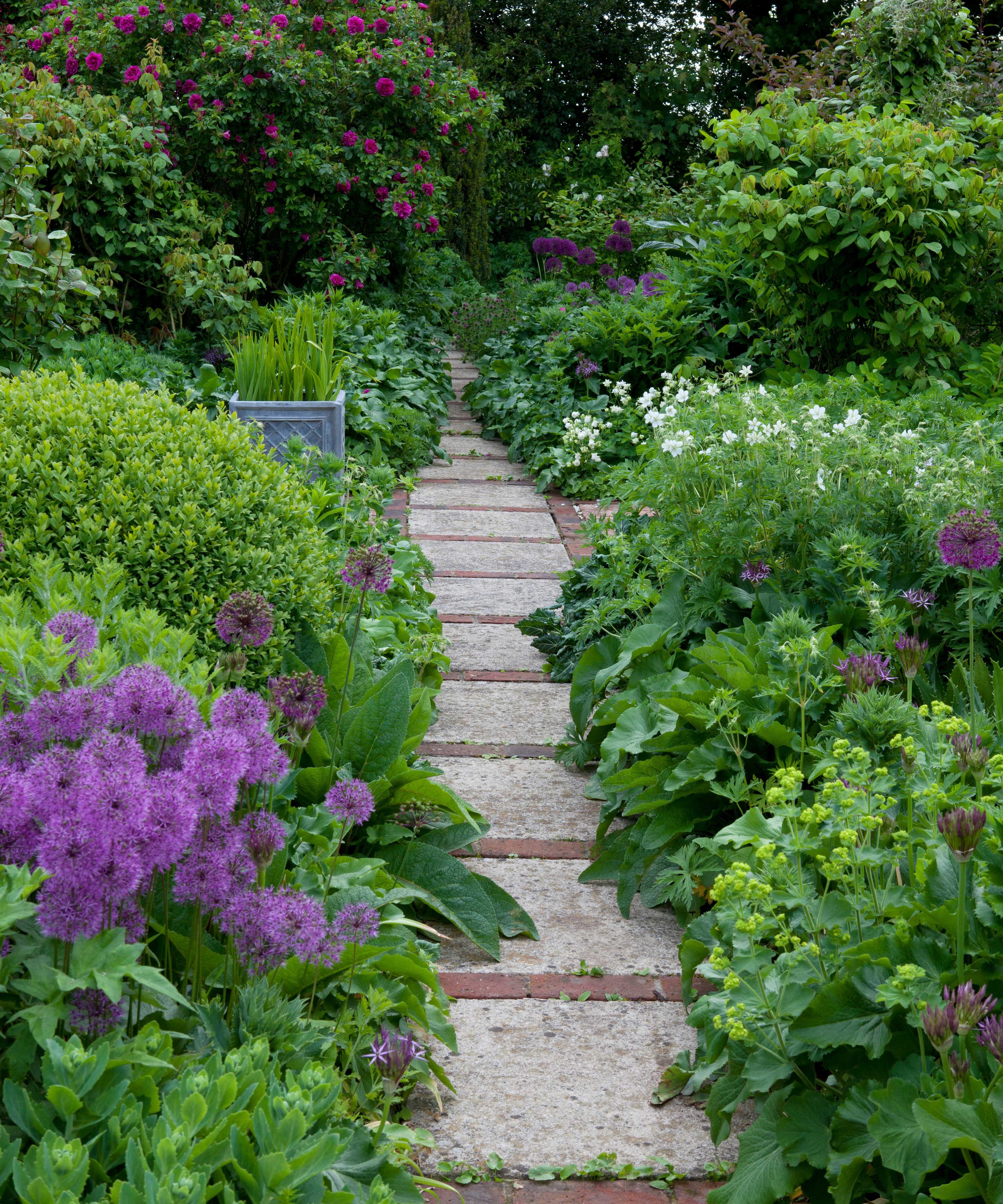
What you plant along your path offers lots of possibilities. Whether massed ribbons of lavender for a formal look, or a naturalistic planting design, it increases the sensory experience of your journey.
'Plants that are suitable for edging garden path ideas vary in size and shape depending on whether the path is in full sunlight or you will require shade plants for darker areas. Most that are suitable are usually mound or clump forming, sometimes evergreen but not always,' explains Rosy Hardy of Hardy's Cottage Garden Plants.
'They can have aromatic foliage for a sensory garden idea, and occasional flowering seasons. Fringing plants need to have a tough constitution as they are often walked on or brushed past, so are not always the showiest, grown instead for their foliage shape and robustness. They are planted to soften the harsh lines of pathways. Suitable plants include geraniums, nepeta, teucrium, artemesia, alchemilla, campanula and ajuga,' Rosy adds.
7. Create a garden path on a slope
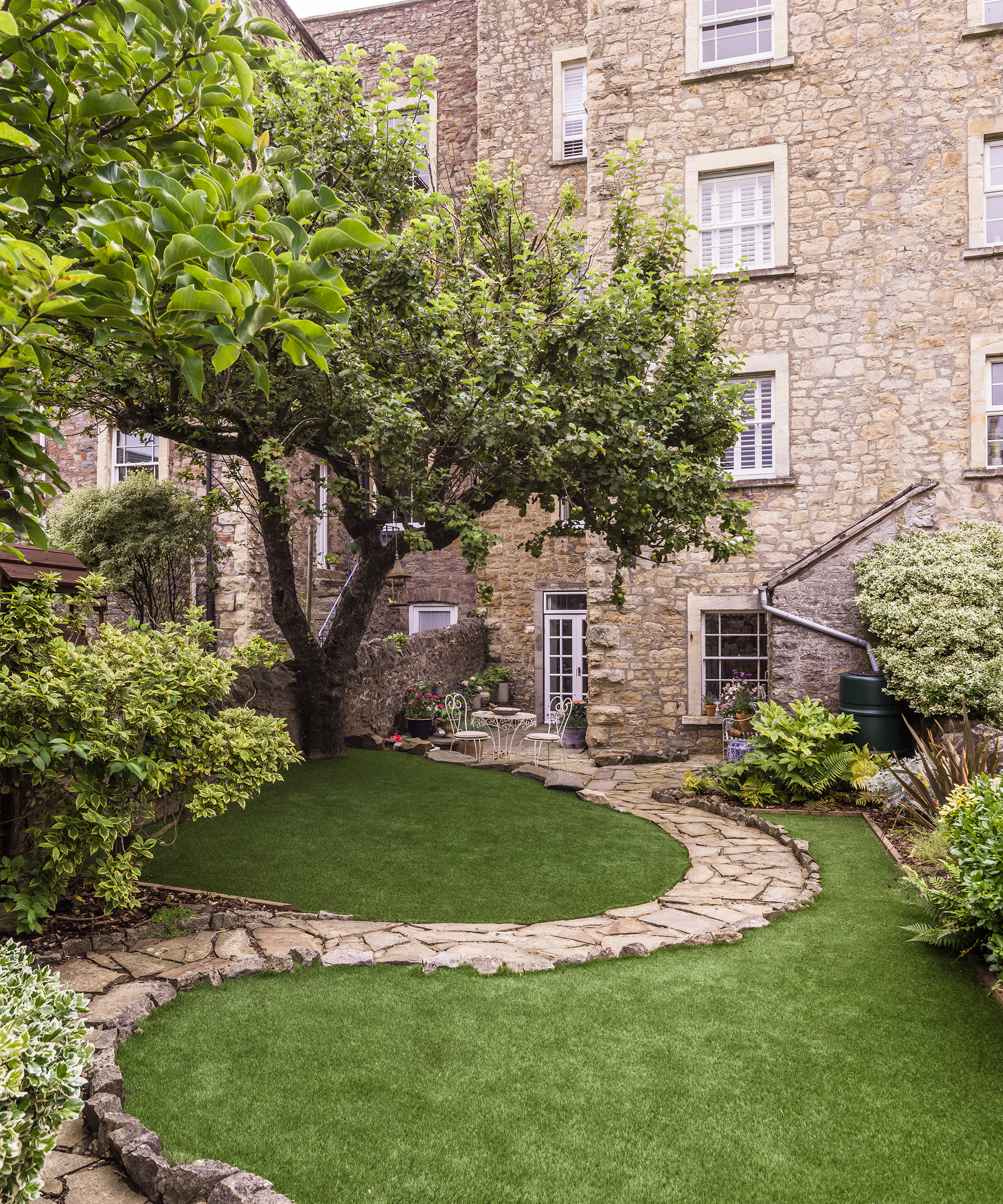
Creating a garden path on a sloping garden is no easy feat, but it can be hugely rewarding if done so successfully. The first thing to consider is what materials you should use, and the possible pitfalls that come with a garden that is not level.
According to Landscape Designer and Writer Mark Lane: 'This is purely down to personal choice, but consider hard standing such as a riven paving or a slab with a rough finish or gravel for level pathways.
Being a slope, there will be more rainwater run-off, so provide adequate slip-resistance underfoot. Of course, borders filled with glorious plants will soak up the majority of the water, but it’s always better to be safe than sorry.'
Here, steps have been positioned at alternate ends of each terrace to create a defined pathway through the sloping garden.
8. Introduce a garden path that enhances your space
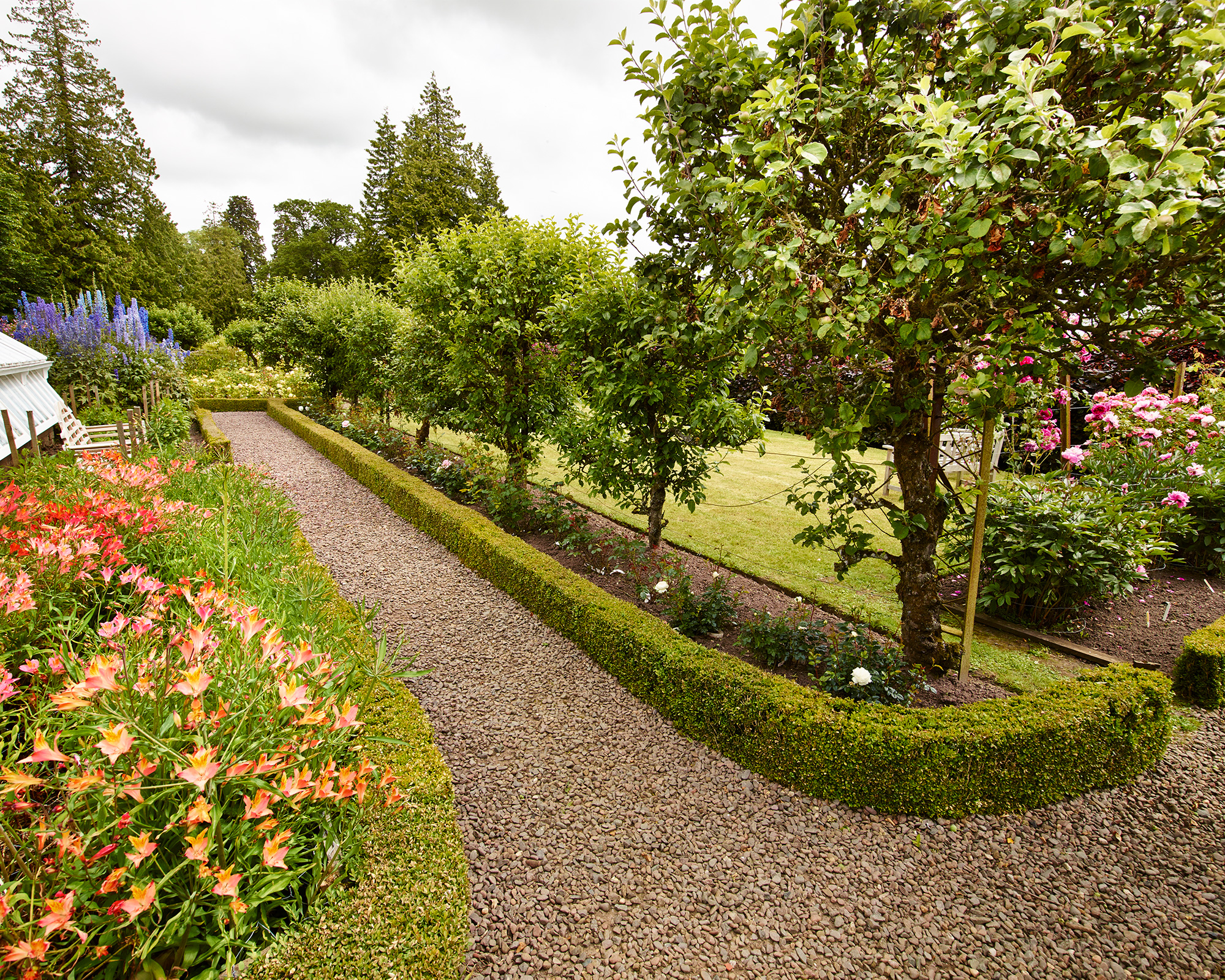
A path should help create atmosphere and be ‘in tune’ with the character of the surroundings.
A softly winding garden path leads the eye through the garden, encouraging it to linger on areas of lovely planting in flower bed ideas, or drawing it forward in straight stretches.
Well-designed paths are attractive features as well as serving a practical purpose, seamlessly linking different areas of the garden.
9. Build a permanent pathway with pavers

Although paths can be temporary – such as a walkway through a meadow cut with a mower – a permanent one will add to the structural backbone of your plot. It can also be a highly ornamental feature in its own right, depending on the originality of the design and the materials you choose.
A functional path built with pavers will take a lot of wear, so it must be level, safe, durable and easily maintained. Think about garden edging for a seamless finish and surrounding planting that will complement the choice of materials.
Traditional pavers are handmade in clay and come in reds and browns that mellow beautifully. Relatively easy to lay, pavers are very forgiving and can be finished by brushing sand into the joints if you want ground-hugging plants to take hold.
10. Add a drought tolerant gravel pathway
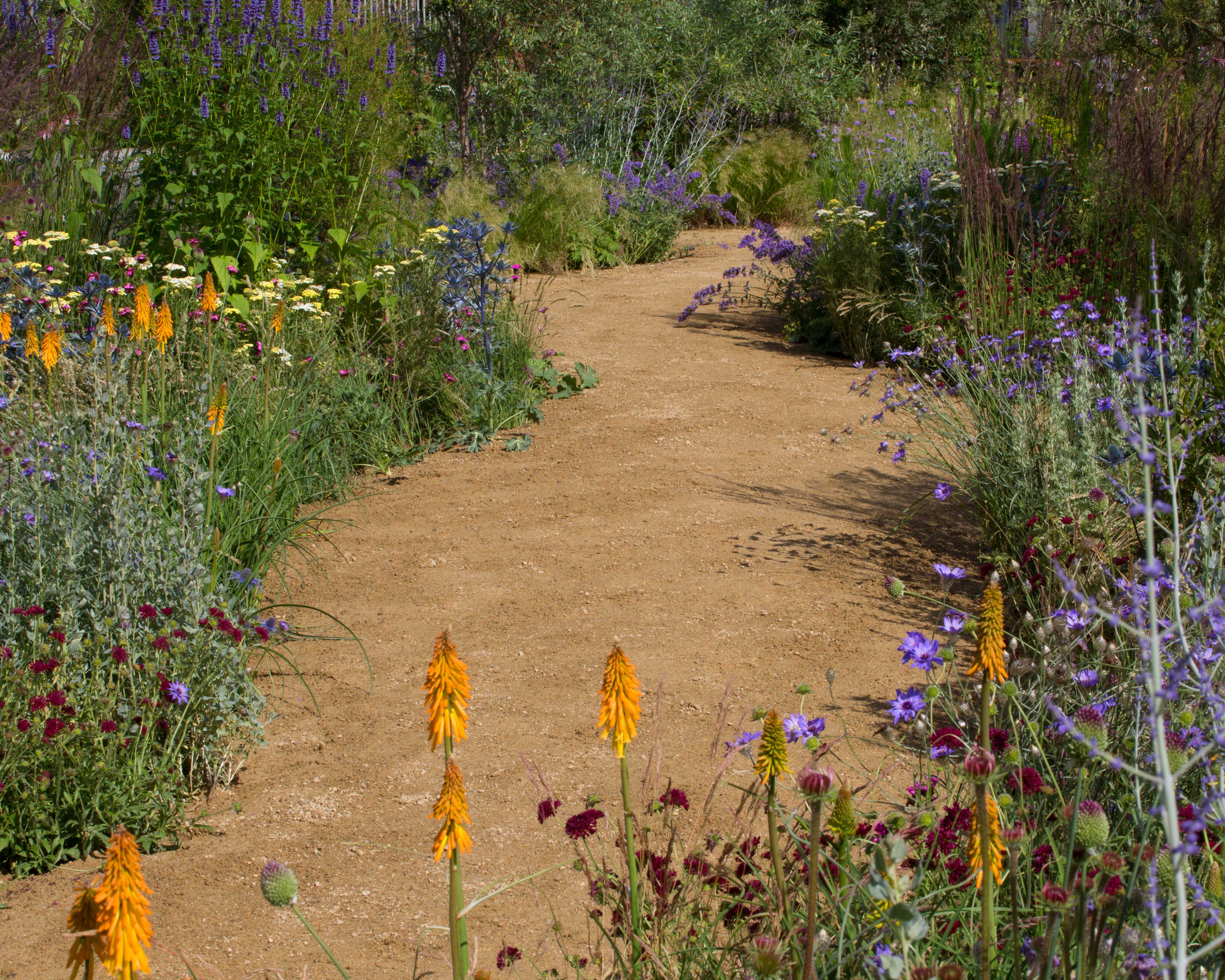
Gravel garden path ideas work particularly well in country gardens or as a coastal garden idea, and are economical and easy to construct. You can create many different shapes, whether straight or curvy, with neatly defined edges visible, or plants gently spilling over hiding the boundary that contains it.
Whether you are creating a gravel garden, or a single path, a compact base is essential. This could be the soil if it is hard clay, or otherwise, if the sub-soil is soft, a tamped down stone pack or hardcore, and a lining of landscape permeable membrane will help keep down weeds. Gravel and hoggin – a mix of gravel, sand and clay that binds yet allows water to drain – is ideal if you're planning a dry garden, which could become more necessary with climate change.
In the curving design above by designer Tom Stuart-Smith, a low maintenance Yorkshire Gold Selfbinda path, known as self-binding or self-compacting gravel, was used for a climate-resilient meadow and Mediterranean plant palette. Most of these self-binding gravels tend to be quarried locally, which is another plus for sustainable garden ideas.
Invest in a gravel in a size that won’t easily stick in the soles of shoes and get ‘walked’ into the house. Gravel can also be used to soften hard-paved edges and to unify unrelated areas in the garden.
11. Make a narrow garden seem wider
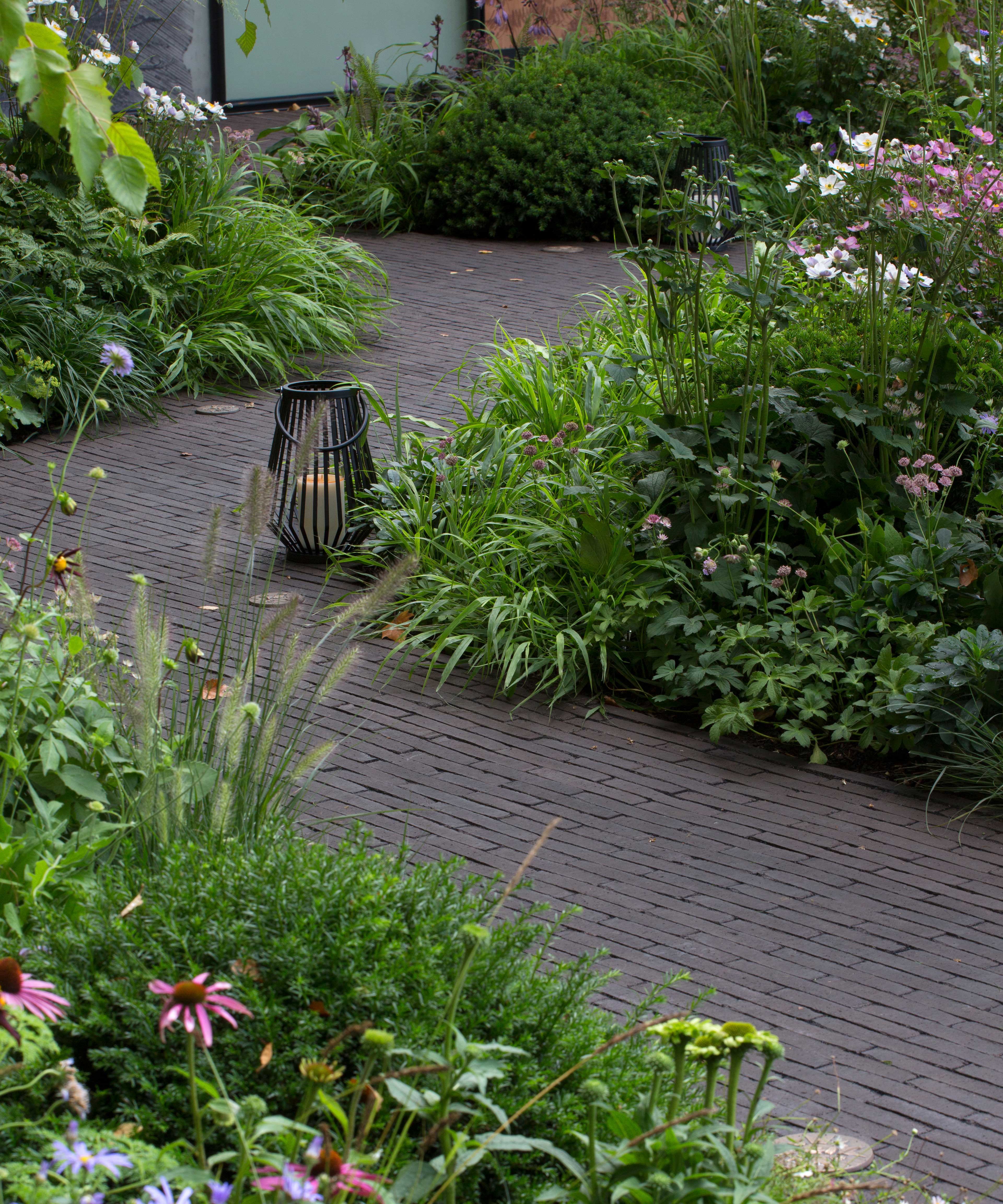
There are no set rules that prevent the use of sinuous paths in a small garden. A short, gently curved path is certainly more interesting that a completely straight one, and a path that zigzags from side to side will make a space seem larger.
This trick is useful for as a narrow garden idea to make a long, narrow backyard seems wider. And a path which gradually becomes narrower will give the illusion that the garden is longer than it really is.
In this design by Robert Myers a journey is more enticing than with a straight path, by zigzagging past lovely greenery and seasonal flowers. Narrow dark toned brick pavers interlock neatly and the path is lit with lanterns as you slowly unwind from the day and admire the array of soft green tones from ferns and grasses with seasonal color from echinacea and asters.
Clay pavers come in a range of colors and sizes. Made of clay, sand and water with no discharge of water, they are another sustainable choice for your garden, while the finished product is frost and stain resistant as well as very hardwearing.
12. Use imaginative edging along your path
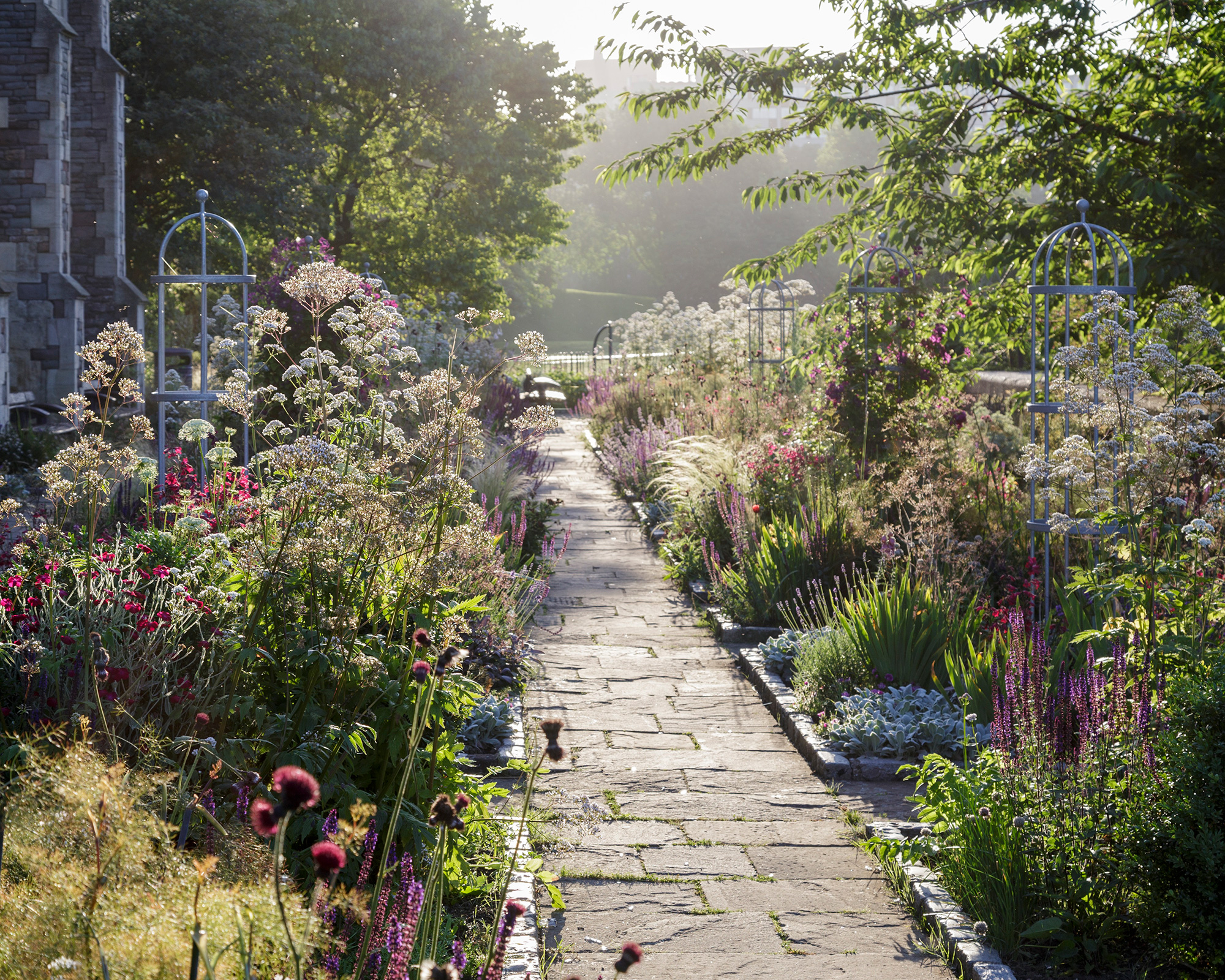
Garden edging ideas act as a frame to any material and are essential where gravel meets a lawn, or where stones meet flower beds.
Linear paths benefit from the definition of a hard edging in engineering or stock bricks, wattle fencing, tiles, pavers or granite setts.
Informal, winding gravel or bark paths can be left to naturally merge into planting or edged with birch poles or other branches laid either side. Large stones or rocks strategically placed offer the same effect – but not near grass – as cutting would be tricky.
If edging with timber, treat with a plant safe preservative and fix with wooden pegs inserted every 1.2m (4ft). Curves can be made by cutting half way through the inside of the planks, then gently coaxing into shape.
13. Opt for a durable brick pathway
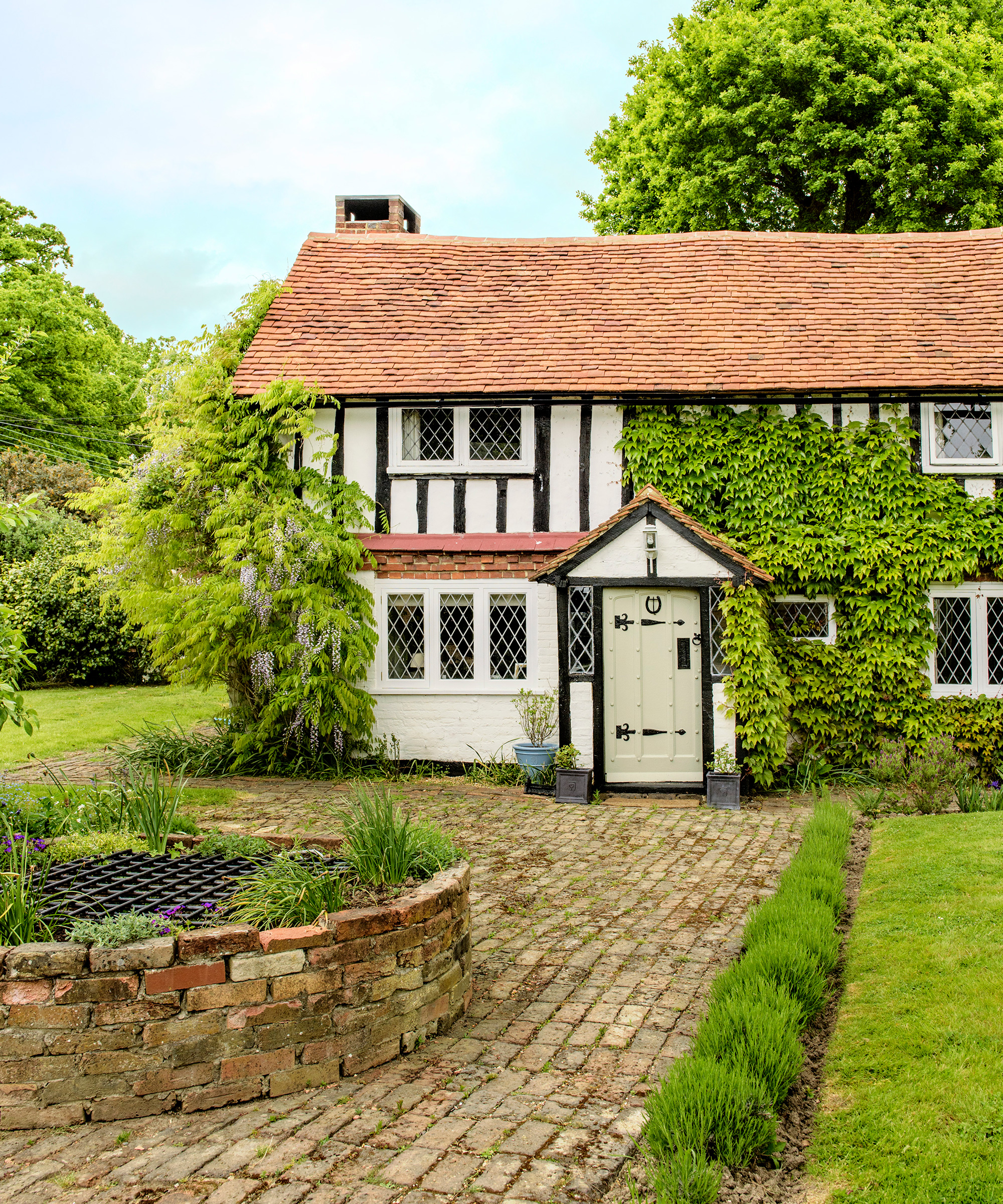
Bricks form durable paths, especially when laid in traditional herringbone, basket weave or stretcher band patterns, and come in red, grey or brown tones.
A herringbone brick path that runs between beautiful borders is an attractive detail, and is very adaptable, being easily scaled up or down to suit the size of the garden.
When calculating a path’s width, allow space for edging plants – a flowering lavender hedge of compact cultivars flopping over the path will be wonderful to sashay through on a summer’s day.
14. Perk up a patio or path

Hard landscaping can easily look dull, but there are ways to bring it to life. You can transform existing pedestrian grey paving by replacing a few slabs with a square of lawn turf or herbs, such as thyme or camomile, creating an attractive chessboard effect.
If you're laying a path choose sustainable stone in a style that suits your outdoor space. Herringbone brick gives the feel of a cottage garden, while travertine paving injects a modern air. Pea gravel looks good anywhere, plus it deters burglars. Mix up materials for more interest, such as above, where more contemporary smooth slabs are mixed with varied areas of gravel
15. Lay down a grass path
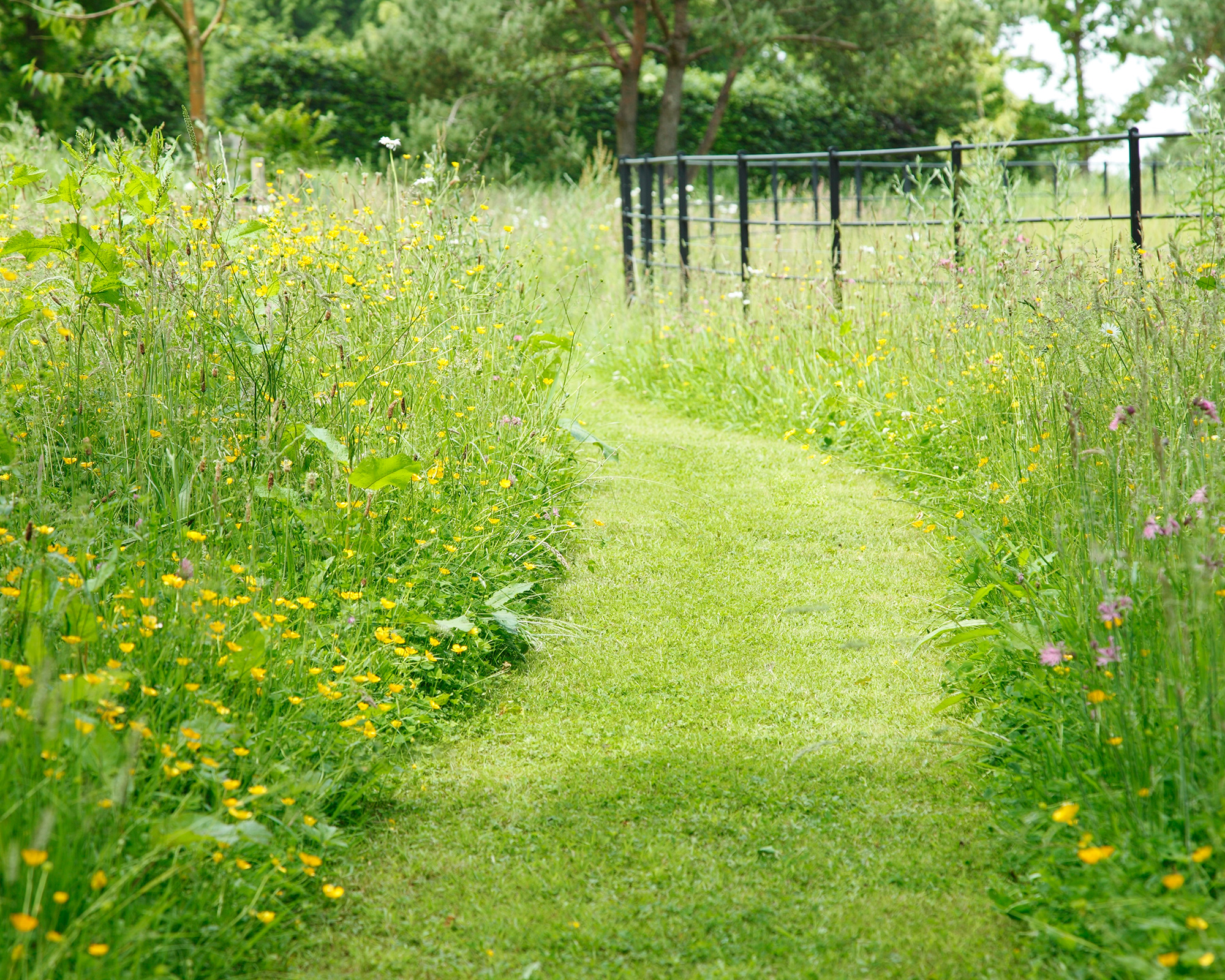
A mown grass path is simply beautiful intersecting through a wildflower meadow; it feels spontaneous and allows you to be immersed in the abundant life of a wild space, exploring from within. This is not a choice for heavy traffic areas; rather it’s more a fair-weather journey. As a small garden idea, you can an area of lawn grow long and mow a walkway through it. Your path or paths could be straight, meandering organically, or spiralling through the landscape. A grass path is inexpensive and easy to maintain with the mower, and you can include lawn edging ideas if you want a neater finish.
A simple lawn walkway is not only easy to do, you can also personalize it by making it as twisty as you like. If you don't already have an area of lawn, then find out how to plant grass seed and you can soon have a beautiful green walkway.
Be kind to your lawn mower by creating your path while the grass is dry and low –and ensure you know how often you mow a lawn for a neat and tidy garden path.
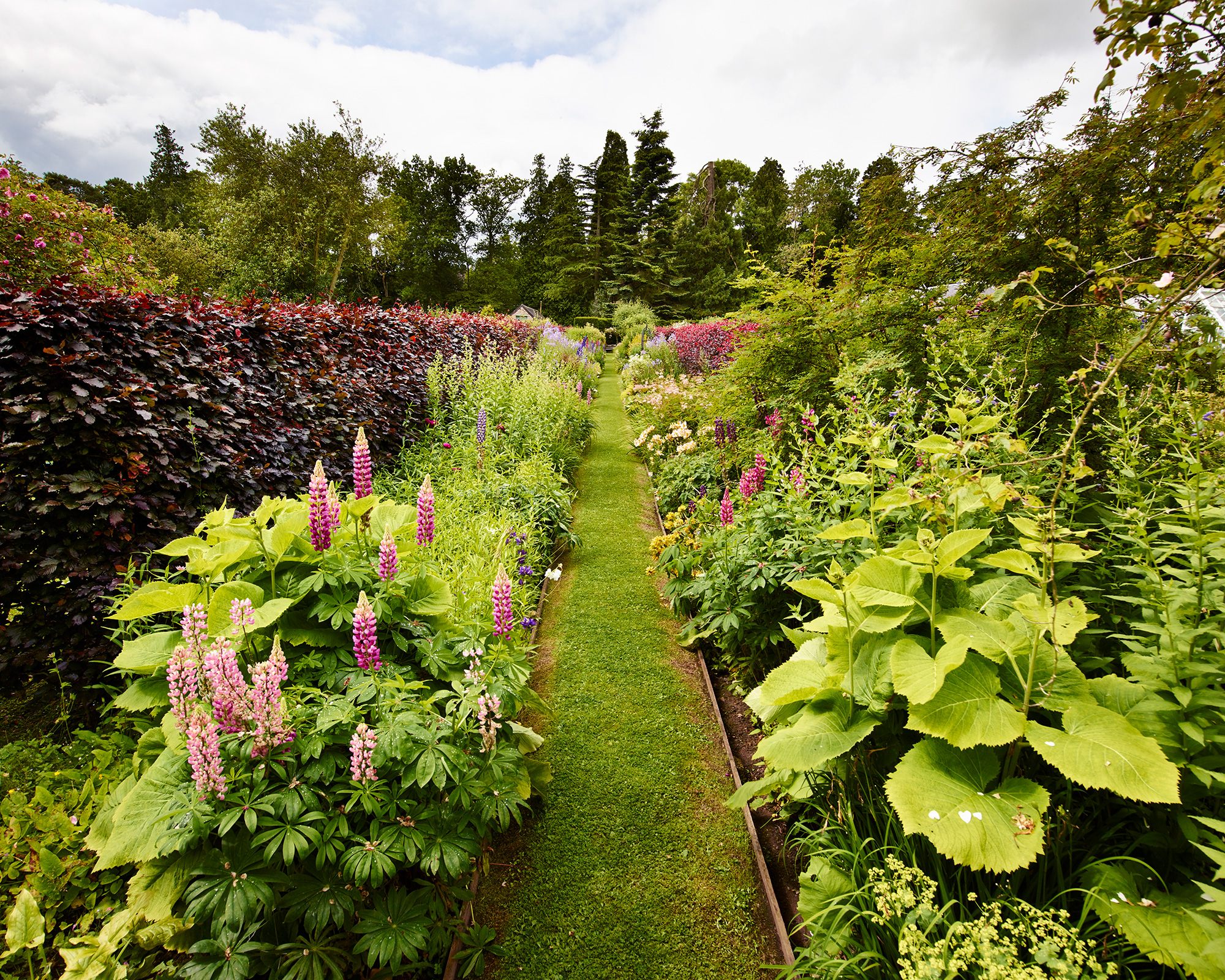
What is the best material for a garden path?
The best material for your garden path is highly dependant on the shape, size, look and function of your garden.
Paths can be short or long, wide or narrow, straight or curvaceous. Slate chipping, gravel and wood chips are often used as loose surface materials, while slabs, tiles, bricks, setts, pavers, decking boards and natural stone provide a solid, smooth surface on which to walk.
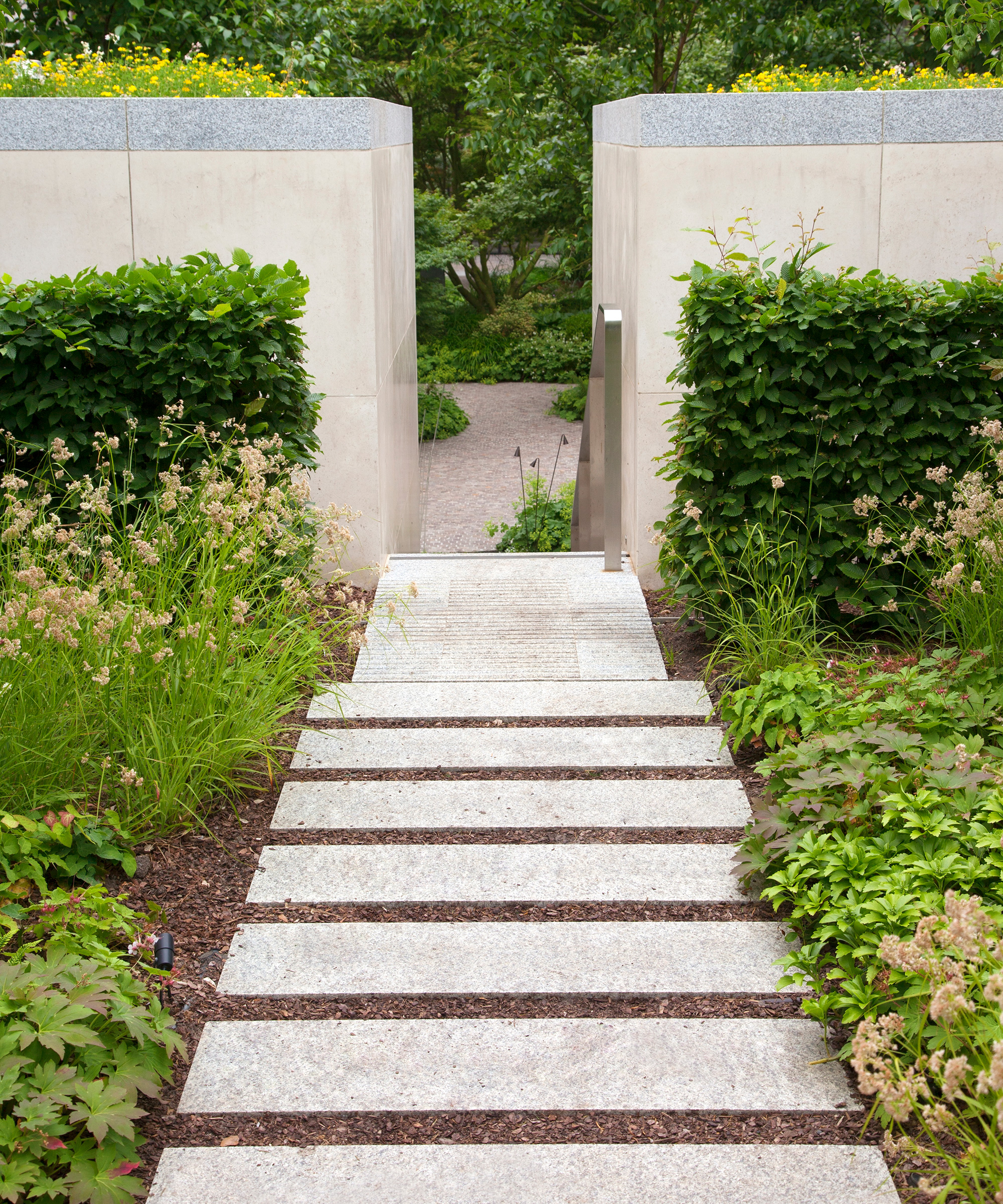
How do you build a garden path on a slope?
While it may not be easy to build a garden path on a slope, it is most certainly doable.
No garden is completely flat, unless a digger has been in and levelled the site, and, many gardens, are on a slope which when viewed at initially can be a little daunting.
To create a pathway on a slope, TV gardening presenter, landscape designer and writer, Mark Lane suggests that: 'You position steps at alternate ends of each terrace to create a defined route or pathway through the garden. This will add interest and tease you on to the next level.'
How do I make my garden path better?
To make your garden path better, begin by taking a good look at the path. Is it functional and attractive? Clearing, cleaning, weeding, editing or adding plants will improve both the design and practicalities. If a gravel or mulched path, it may need topping up, a stone path may need some stones replacing and adding a decorative edging can uplift a design.
How do I make a simple garden path?
Stepping-stones are among the easiest and fastest way to build a path. Using less stone makes them economical as well, and you could use other materials such as concrete blocks, pavers, wood offcuts, or even make your own mosaics. On a lawn, cut out sod and fit in the steps. To make levelling easier, form a sand base.

Jennifer is the Digital Editor at Homes & Gardens, bringing years of interiors experience across the US and UK. She has worked with leading publications, blending expertise in PR, marketing, social media, commercial strategy, and e-commerce. Jennifer has covered every corner of the home – curating projects from top interior designers, sourcing celebrity properties, reviewing appliances, and delivering timely news. Now, she channels her digital skills into shaping the world’s leading interiors website.
- Leigh ClappContributing Editor